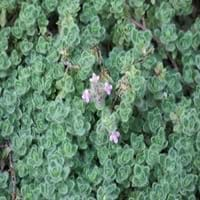Life Span
Perennial
Perennial
Origin
Eastern Europe
Europe, Mediterranean, Northern Africa, Asia
Types
Not Available
Not Available
Habitat
Terrestrial
Cultivated Beds
USDA Hardiness Zone
4-9
Not Available
Sunset Zone
1a, 1b, 2a, 2b, 3a, 3b, 4, 5, 6, 7, 8, 9, 10, 11, 12, 13, 14, 15, 16, 17, 18, 19, 20, 21, 22, 23, 24
A2, A3, 1a, 1b, 2a, 2b, 3a, 3b, 4, 5, 6, 7, 8, 9, 10, 11, 12, 13, 14, 15, 16, 17, 18, 19, 20, 21, 22, 23, 24
Habit
Clump-Forming
Mat-forming
Flower Color
Yellow, Lavender, Blue Violet
Light Pink, Lavender
Flower Color Modifier
Bicolor
Bicolor
Fruit Color
Not Available
Not Available
Leaf Color in Spring
Green, Sea Green
Sea Green, Gray Green
Leaf Color in Summer
Green, Sea Green
Sea Green, Gray Green
Leaf Color in Fall
Green, Sea Green
Sea Green, Gray Green
Leaf Color in Winter
Light Green
Light Green
Leaf Shape
Lanceolate
Ovate
Plant Season
Spring, Summer
Spring, Summer, Fall, Winter
Sunlight
Full Sun, Partial Sun
Full Sun, Partial Sun
Type of Soil
Loam, Sand
Loam, Sand
The pH of Soil
Neutral
Acidic, Neutral
Soil Drainage
Well drained
Well drained
Bloom Time
Spring, Late Spring, Early Summer
Late Spring, Early Summer, Summer
Tolerances
Drought
Drought
Where to Plant?
Ground
Ground
How to Plant?
By dividing rhizomes, tubers, Seedlings
Divison, Seedlings
Plant Maintenance
Medium
Medium
Watering Requirements
Average Water Needs, Do Not over Water
Average Water Needs, Do Not over Water
In Summer
Lots of watering
Lots of watering
In Spring
Moderate
Moderate
In Winter
Average Water
Average Water
Soil pH
Neutral
Acidic, Neutral
Soil Type
Loam, Sand
Loam, Sand
Soil Drainage Capacity
Well drained
Well drained
Sun Exposure
Full Sun, Partial Sun
Full Sun, Partial Sun
Pruning
Remove damaged leaves, Remove dead branches, Remove dead leaves
Remove damaged leaves, Remove dead branches, Remove dead leaves
Fertilizers
All-Purpose Liquid Fertilizer
Fertilize every year
Pests and Diseases
Red blotch
Gray mold, Root rot
Plant Tolerance
Drought
Drought
Flower Petal Number
Single
Single
Foliage Texture
Coarse
Fine
Foliage Sheen
Matte
Matte
Attracts
Hummingbirds
Butterflies
Allergy
Skin irritation
Skin irritation
Aesthetic Uses
Showy Purposes
Borders, Cottage Garden
Beauty Benefits
Not Available
Not Available
Environmental Uses
Air purification
Air purification
Medicinal Uses
No Medicinal Use
Antiseptic, Disinfectant
Part of Plant Used
Not Available
Leaves
Other Uses
Used as Ornamental plant
Used as a flavouring in food, Used as essential oil
Used As Indoor Plant
No
No
Used As Outdoor Plant
Yes
Yes
Garden Design
Alpine, Edging, Mixed Border, Rock Garden, Wall
Alpine, Container, Edging, Edible, Herb / Vegetable, Mixed Border, Rock Garden / Wall
Botanical Name
IRIS pumila
THYMUS pseudolanuginosus
Common Name
Dwarf Iris
Wooly Thyme
In Hindi
Dwarf Iris
Wooly Thyme
In German
Zwergiris
Wooly Thymian
In French
Dwarf Iris
Wooly Thyme
In Spanish
Enano Iris
Lanoso Tomillo
In Greek
νάνος Ίρις
Wooly Θυμάρι
In Portuguese
Dwarf Iris
Wooly tomilho
In Polish
Dwarf Iris
Wooly Tymianek
In Latin
Iris Dwarf
Wooly Thyme
Phylum
Magnoliophyta
Magnoliophyta
Class
Liliopsida
Magnoliopsida
Family
Iridaceae
Lamiaceae
Clade
Angiosperms, Monocots
Angiosperms, Asterids, Eudicots
Tribe
Irideae
Not Available
Subfamily
Iridoideae
Not Available
Number of Species
Not Available
Not Available
Season and Care of Dwarf Iris and Wooly Thyme
Season and care of Dwarf Iris and Wooly Thyme is important to know. While considering everything about Dwarf Iris and Wooly Thyme Care, growing season is an essential factor. Dwarf Iris season is Spring and Summer and Wooly Thyme season is Spring and Summer. The type of soil for Dwarf Iris is Loam, Sand and for Wooly Thyme is Loam, Sand while the PH of soil for Dwarf Iris is Neutral and for Wooly Thyme is Acidic, Neutral.
Dwarf Iris and Wooly Thyme Physical Information
Dwarf Iris and Wooly Thyme physical information is very important for comparison. Dwarf Iris height is 10.20 cm and width 15.20 cm whereas Wooly Thyme height is 250.00 cm and width 45.70 cm. The color specification of Dwarf Iris and Wooly Thyme are as follows:
Dwarf Iris flower color: Yellow, Lavender and Blue Violet
Dwarf Iris leaf color: Green and Sea Green
Wooly Thyme flower color: Light Pink and Lavender
- Wooly Thyme leaf color: Sea Green and Gray Green
Care of Dwarf Iris and Wooly Thyme
Care of Dwarf Iris and Wooly Thyme include pruning, fertilizers, watering etc. Dwarf Iris pruning is done Remove damaged leaves, Remove dead branches and Remove dead leaves and Wooly Thyme pruning is done Remove damaged leaves, Remove dead branches and Remove dead leaves. In summer Dwarf Iris needs Lots of watering and in winter, it needs Average Water. Whereas, in summer Wooly Thyme needs Lots of watering and in winter, it needs Average Water.





